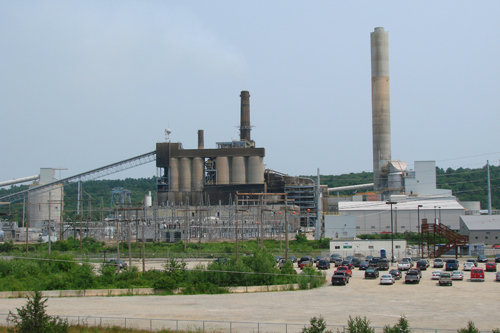 Clean Water Act § 316(b) requires facilities that discharge waste heat (primarily thermal electric steam generating power plants) to use the “Best Technology Available” (BTA) for minimizing or avoiding adverse environmental impact. The primary impact of these facilities is the impingement and entrainment of billions of fish and aquatic organisms annually in the cooling water intake streams of these power plants. Closed-cycle cooling — using air cooling instead of water cooling for steam condensers — has been an available technology since the middle of the 20th century. Closed cycle cooling reduces water intake volume — and corresponding fish impacts — by 90-99% compared to once-through cooling. Environmental groups have been pushing to require closed-cycle cooling at power plants since the beginning of the environmental law era of the 1970s — and electric generating utilities have been resisting closed cycle cooling equally strenuously — primarily to save money.
Clean Water Act § 316(b) requires facilities that discharge waste heat (primarily thermal electric steam generating power plants) to use the “Best Technology Available” (BTA) for minimizing or avoiding adverse environmental impact. The primary impact of these facilities is the impingement and entrainment of billions of fish and aquatic organisms annually in the cooling water intake streams of these power plants. Closed-cycle cooling — using air cooling instead of water cooling for steam condensers — has been an available technology since the middle of the 20th century. Closed cycle cooling reduces water intake volume — and corresponding fish impacts — by 90-99% compared to once-through cooling. Environmental groups have been pushing to require closed-cycle cooling at power plants since the beginning of the environmental law era of the 1970s — and electric generating utilities have been resisting closed cycle cooling equally strenuously — primarily to save money.
Recently, the issue of whether CWA § 316(b) requires retrofitting closed cycle cooling at existing power plants as a matter of course made it to the Supreme Court, in Entergy v Riverkeeper. In that case, the Supreme Court considered whether section 316(b) allowed EPA to consider cost in establishing uniform national regulations establishing BTA for the electric power industry.
Unfortunately for the environmentalists, the Supreme Court held that EPA could take cost into account in establishing BTA (presumably to avoid adoption of closed cycle cooling as universally required BTA for all existing power plants). But while the BTA regulations languish on remand, EPA region I has been making some small strides towards implementing closed cycle cooling as BTA for individual power plant permits. In 2003, Region I required closed cycle cooling as BTA for the Brayton Point power plant.
And last week, EPA issued a draft permit for the Merrimack River Power Station which also requires that power plant to install closed-cycle cooling. Significantly, EPA Region I found that closed cycle cooling was required to meet water quality standards, and to implement Best Available Technology required by CWA section 301(a) for heat discharges (a non-conventional pollutant), as well as being the Best Technology Available under section 316(b).
EPA’s 400 page supporting analysis is worth perusing. EPA undertakes a cost effectiveness analysis before concluding that closed-cycle cooling is BTA — but specifically eschews any attempt to monetize the environmental benefits for a cost-benefit analysis.
So closed cycle cooling continues to make inroads on a plant by plant basis even in the absence of nationwide regulations. The Pace Environmental Litigation Clinic is still fighting this battle for its client, Riverkeeper, as the Indian Point Clean Water Act permit moves into administrative hearings later this month on the BTA issue. New York State DEC, like EPA Region, has determined that BTA for Indian Point is closed cycle cooling, and Entergy, the plant’s owner is contesting that determination before Administrative Law Judge Villa.
